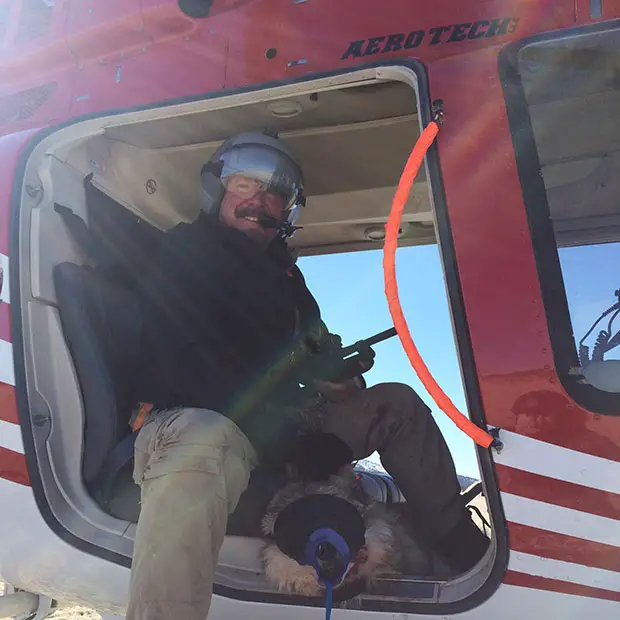A native of Arizona, Dr. Ole Alcumbrac always has had a great passion and affinity for natural resources and animals.
He majored in wildlife biology as an undergraduate student and earned his veterinary degree in 1989 from Colorado State University. His mentor in veterinary school introduced him to wildlife capture, but he owed Arizona four years of veterinary practice, so he joined a mixed animal practice back home.
He volunteered for Arizona Game and Fish, though, and the department hired him as the state’s first wildlife veterinarian. When he realized he wasn’t, in his words, cut out for a government job, he started White Mountain Animal Hospital in Lakeside, Arizona, and became a contractor for work on wildlife.

Dr. Alcumbrac found out that he couldn’t be at every capture event, so he got involved in teaching wildlife capture and immobilization. He developed a course that has been taught internationally to provide information about drugs used in wildlife work, remote drug delivery systems, dart systems, and different techniques of catching animals based on the reason or justification for capture.
He also got involved in investigation of wildlife drugs for the Food and Drug Administration and became part owner of Wildlife Pharmaceuticals Mexico, which manufactures drugs for wildlife capture. Additionally, he is the veterinarian for Bearizona, a wildlife park where more than half the animals are rescues.
“It’s a pretty broad base, but to me it’s just a wonderful thing. I’m giving back to Mother Earth in a way,” Dr. Alcumbrac said. “At my level, I’ve always counseled the young veterinarians that want to go down this path that in the big pyramid of wildlife management, a veterinarian is a piece of that pyramid. There’s a lot of other moving parts, and so we’re kind of a cog in the wheel.”
A television producer found Dr. Alcumbrac on the internet and thought that his work in wildlife capture would make for an interesting program, which led to “Wild Ops” on the Outdoor Channel. He thought that was his 15 minutes of fame, but then he got a call from a producer to do “The Wild Life of Dr. Ole” on National Geographic, a program about both his wildlife work and his mixed animal practice.
Times have changed a lot since Dr. Alcumbrac earned his veterinary degree in 1989.
“There wasn’t really such a thing as a wildlife veterinarian. We didn’t know what we were back then,” he said. “We understood we could be helpful, but I think the management agencies didn’t really know what to do with us back then. They kind of considered us something that is going to fix the broken animal.”
Through the years, he has tried to explain the roles of wildlife veterinarians, such as training biologists how to do procedures in the field. He said, “More importantly, we are herd health managers, like production animal veterinarians, and we can actually maximize the ability to keep those populations viable and stable out there in the real world.”
Over time, wildlife veterinarians gained the respect of the management community as well as introduced a new way of thinking. For example, in wildlife capture, veterinarians helped develop ways of handling animals with less mortality and morbidity. When Dr. Alcumbrac started working with pronghorns, 40% mortality was considered acceptable because pronghorns basically run for a living and are prone to capture myopathy. Now, there is virtually zero mortality.
Dr. Alcumbrac’s goal is to keep wildlife on the landscape not only for himself but also for his grandkids. He said, “Our job is to protect and to conserve these animals, and my job is to make sure that these populations are going to be there for generations to come.”
